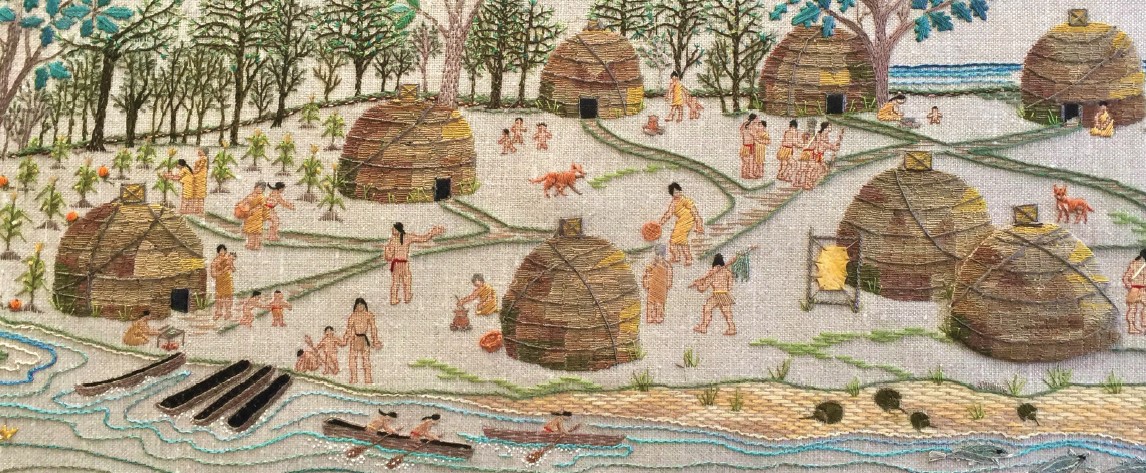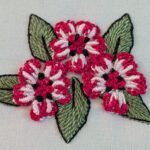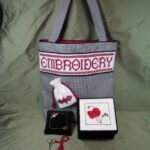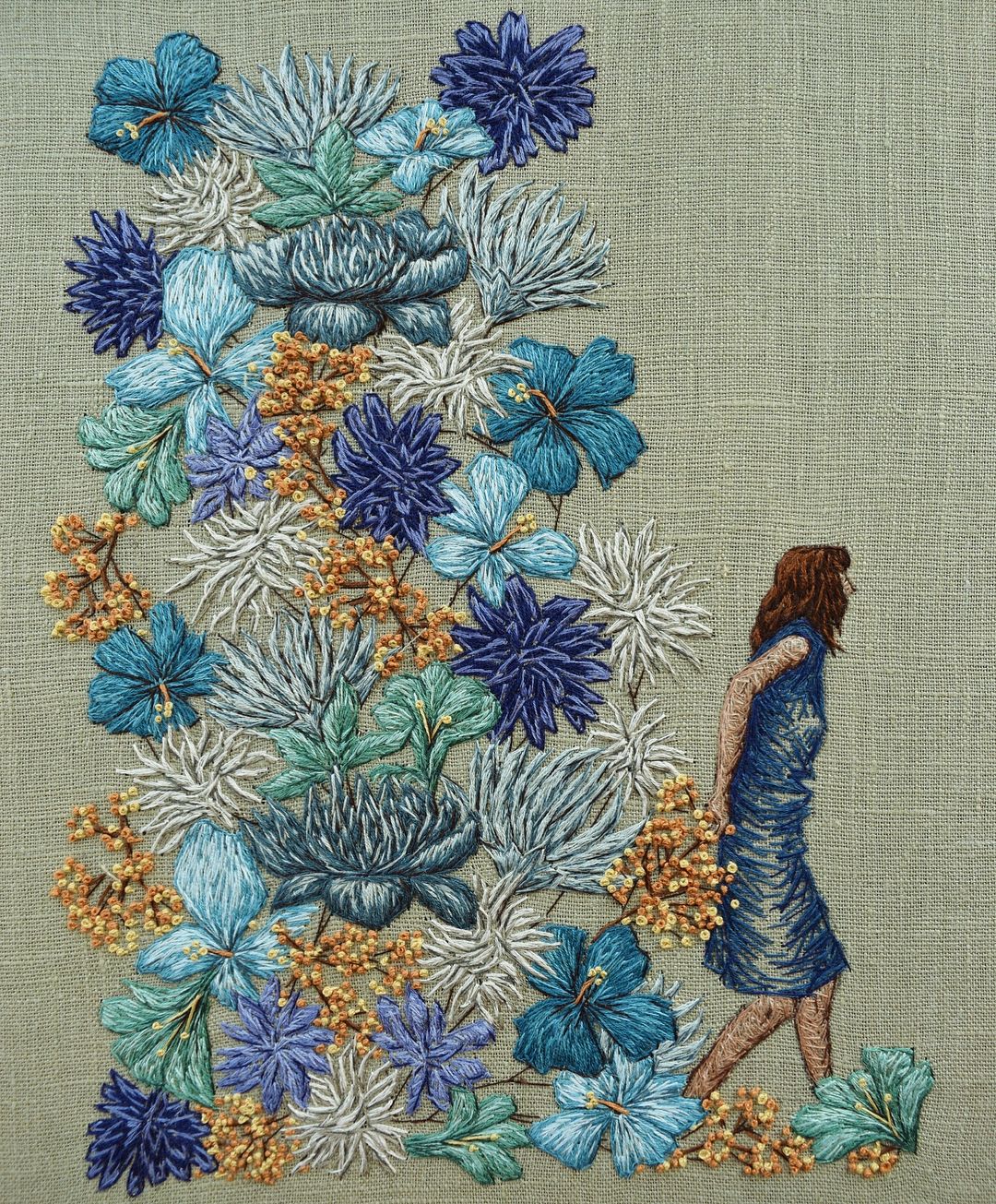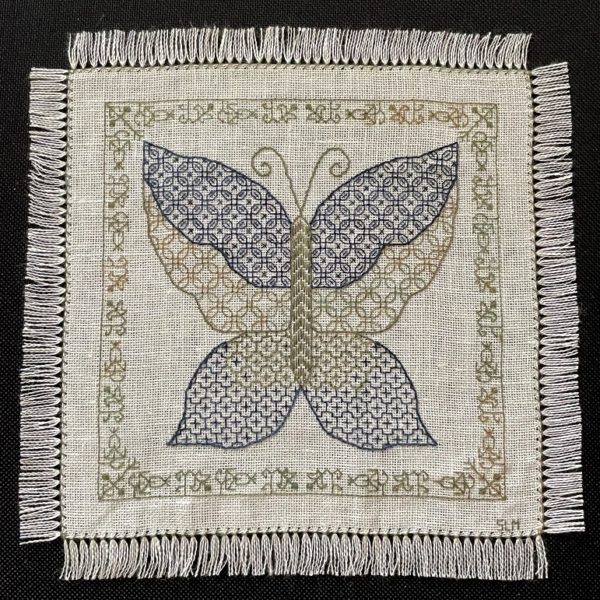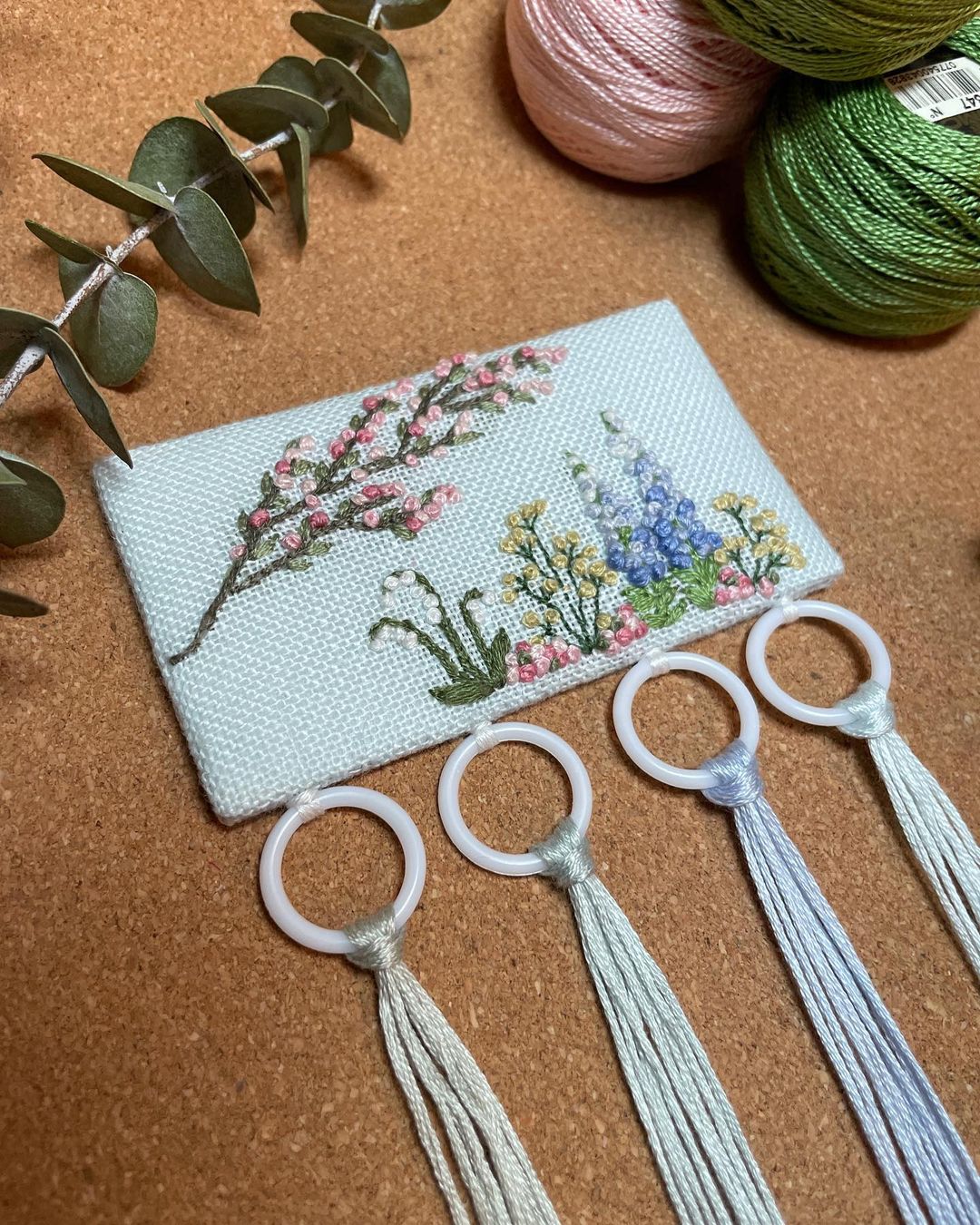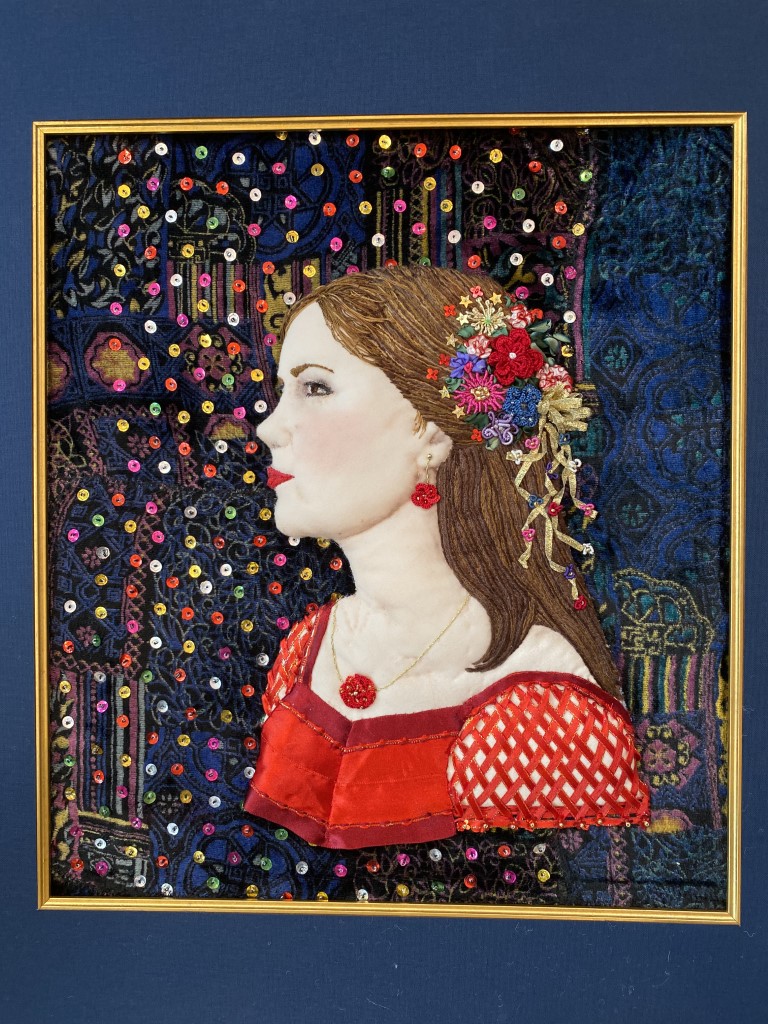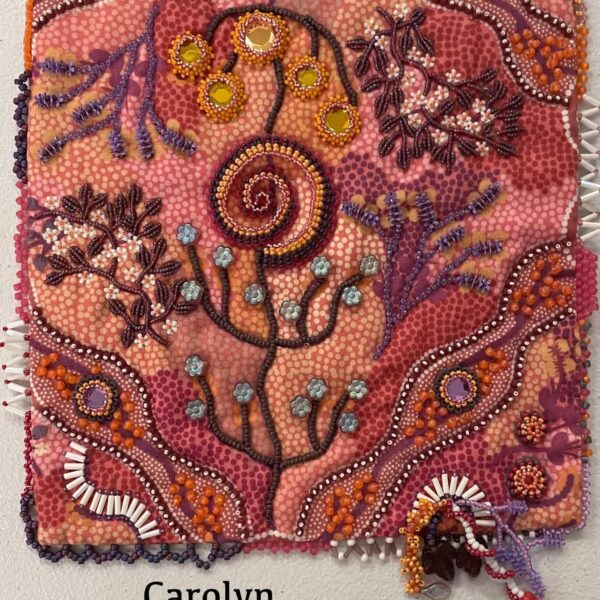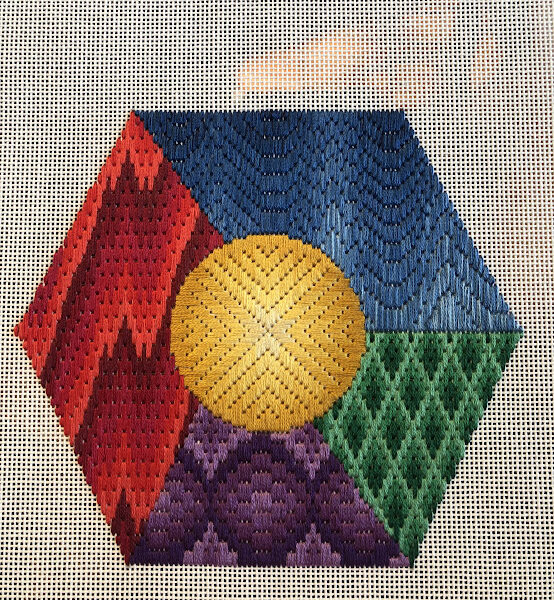Technique: Tatreez
Place of Origin: Palestine
Earliest known date: 1200 BCE (Canaanite Era)
History:
The origins of Tatreez embroidery can be traced back 3,000 years ago, when Palestine was known as Canaan. “Tatreez” comes from the Arabic word tarza, which means “stitch.”
Tatreez is inextricably tied to the history and culture of the Palestinian people. Tatreez designs and the colors employed communicate information about the stitcher: their village, marital status, and social class and position. For instance, traditionally, unmarried women stitched with blue thread, married women stitched with red thread, and widowed women stitched over red thread with blue thread.

Tatreez is used to embellish the thobe, the traditional, loose-fitting dress of Palestinian women. The embroidery featured most prominently in the cuffs, bodice, and sleeves. Tatreez also features in headdresses, veils, and pants, and home furnishings.
Using motifs passed down generationally from mother to daughter, Palestinian families preserved their heritage and lineage in a story worked in stitches. Girls learn the art of tatreez at 6 or 7 years old from a female elder to preserve the knowledge and history of the village and its people. A communal activity, stitching tatreez together is a bonding ritual, and a space to communicate openly and share experiences. Tatreez became especially important after the mass displacement of Palestinians during the 1948 Arab-Israeli war known as the Nakba, when women stitched and wore thobes as a symbol of resistance and resilience.
Tatreez joined UNESCO’s Representative List of the Intangible Cultural Heritage of Humanity in 2021.
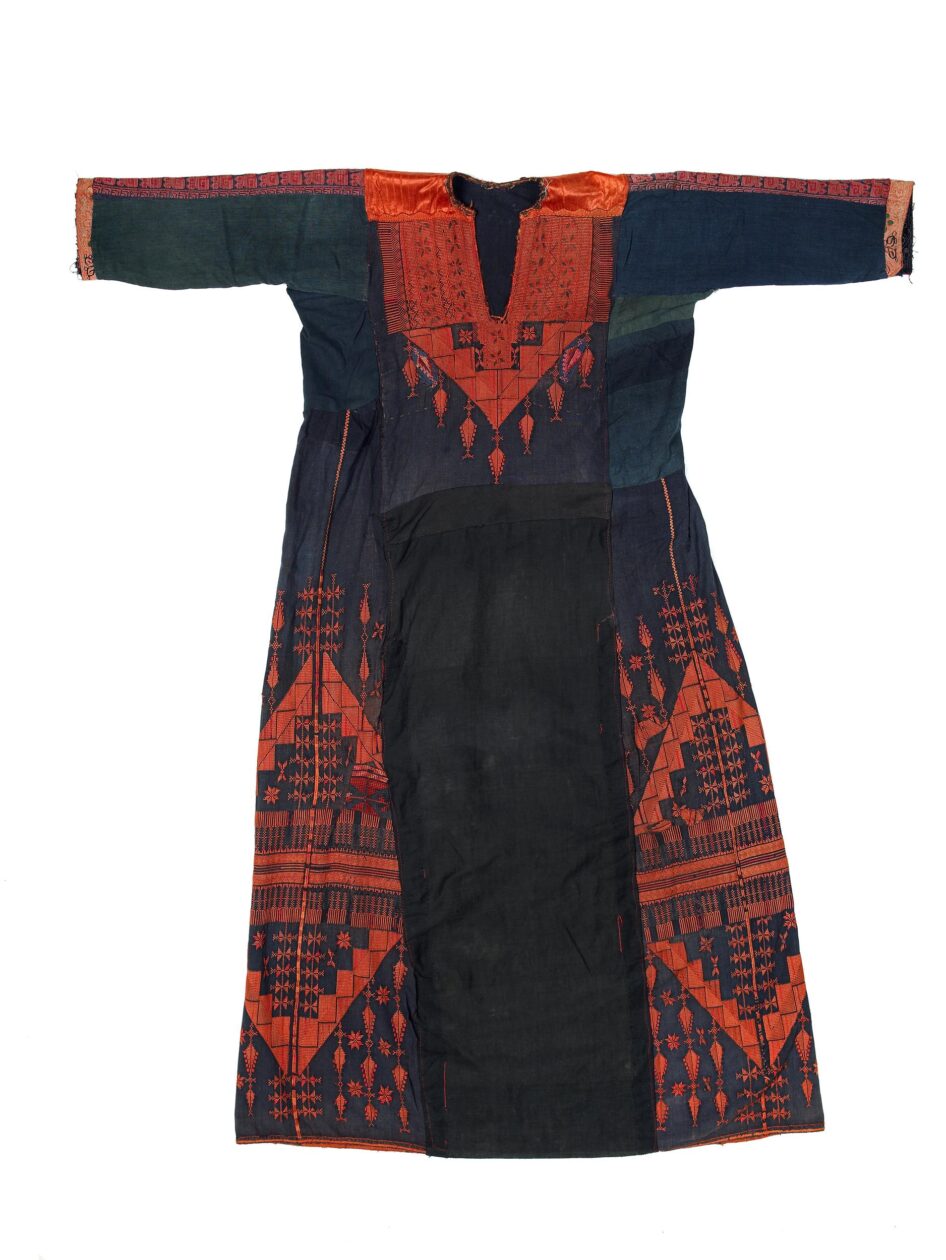
Materials, Techniques, and Stitches:
The most recognizable stitch used in tatreez is cross stitch. However, tatreez also uses hemming stitch (jadleh); zig zag applique (tishrim) connecting stitch (manajel), used to decoratively join two fabric panels together (seen below as the two vertical stitched columns); and patchwork stitch (tashreem).
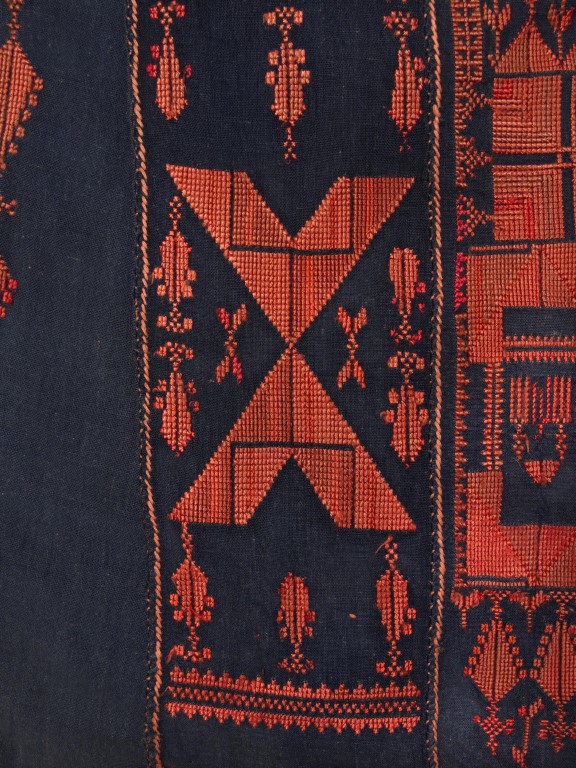
Tatreez embroiderers use cotton or silk thread, depending on the occasion. Silk thread might be used for a wedding or significant event, for example, along with silver or gold threads. Tatreez is stitched on cotton, linen, or cotton-linen blend fabric. In modern day Gaza, Palestinian women have also used burlap sacks to create patchwork thobes.
Tatreez is like an embroidered language, communicating ancestry, history, culture, and region. Tatreez motifs were stitched with hope, to bring the wearer good luck and prosperity. Amulets, called hijabat, are a common tatreez motif, and are meant to protect the wearer.
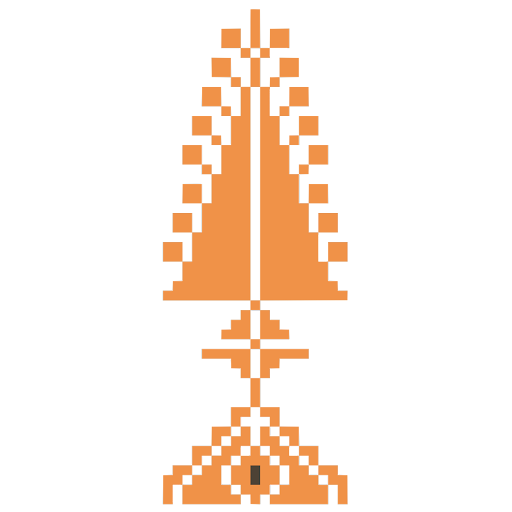
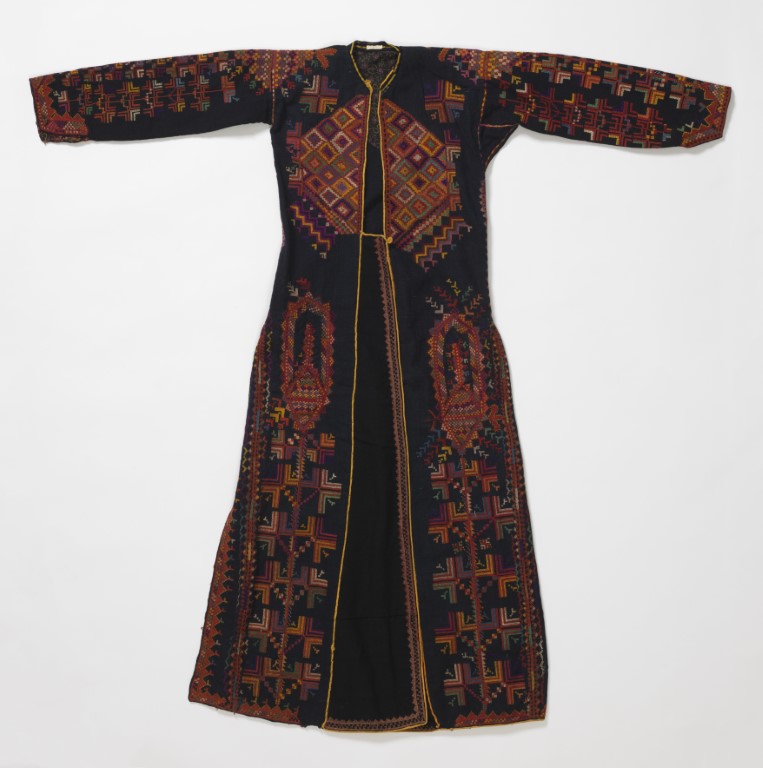
Geometric motifs feature prominently in tatreez, and this often serves to reflect the Palestinian landscape, or identify the provenance of the embroidered piece.
For instance, tatreez from Gaza may feature a cypress tree motif. Tatreez from Ramallah often features bright red thread and palm trees. Mountainous landscape motifs may identify tatreez from Hebron. The eight-pointed star, a motif that spread far beyond Palestine and has been reproduced for centuries, hails from the village of Bethlehem, hence its name: the Star of Bethlehem. Tatreez from Jaffa might feature oranges. The Keffiyeh motif became a symbol of the Palestinian identity and mirrored the traditional Palestinian scarf.
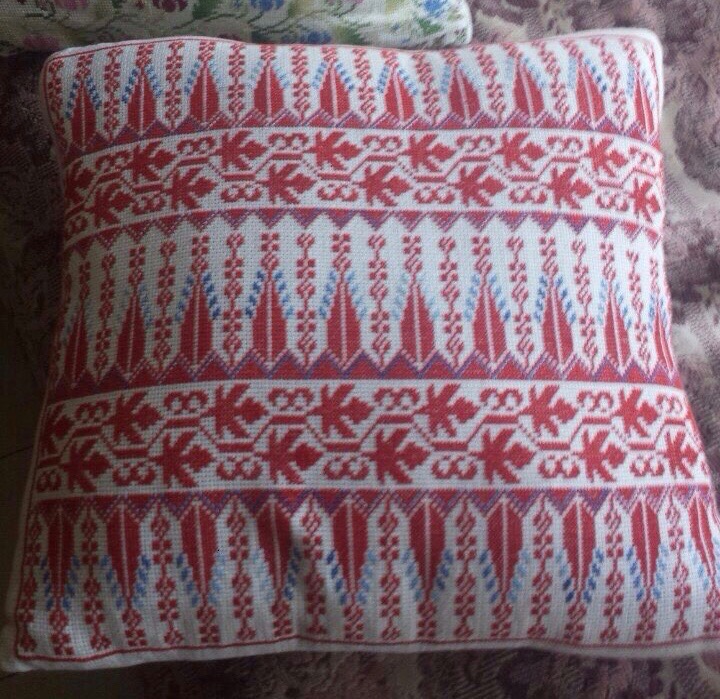
Tatreez motifs might also reflect the time period in which they were developed. After British colonization, a missile motif entered the cross-stitched lexicon, as well as a motif known as “the Officer’s Badge,” which reflected the British military ranking system. Tatreez Traditions has a lovely, albeit small library of free pattern motifs interested cross stitchers can download. Tirazain is another great resource.
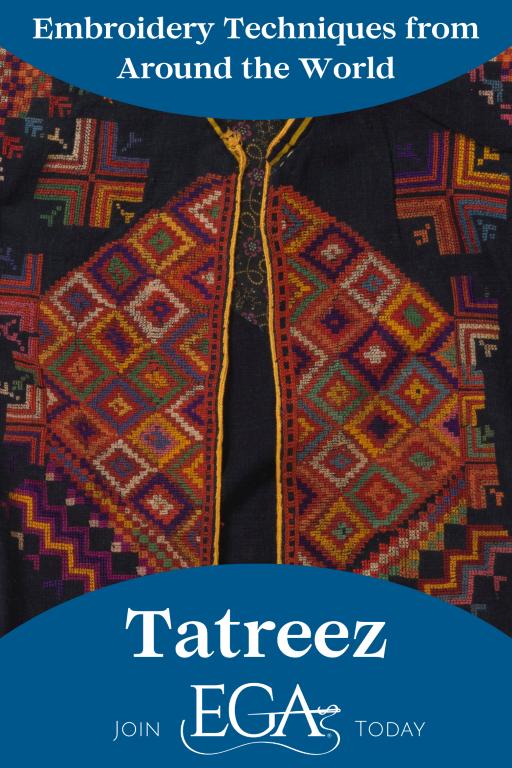
(2020, June 10). Palestinian fashion from ancient Canaan to a thobe in Congress. Middle East Eye. Retrieved July 4, 2024, from https://www.middleeasteye.net/discover/palestine-traditional-fashion-thobe-canaan-book-review
(2024, May 3). A Timeline of Palestinian Tatreez. Handmade Palestine. Retrieved July 8, 2024, from https://handmadepalestine.com/blogs/news/a-timeline-of-palestinian-tatreez
(2024, May 3). Traditional Embroidery: A Brief History of Tatreez. Handmade Palestine. Retrieved July 8, 2024, from https://handmadepalestine.com/blogs/news/tatreez
Miranda, S. (2024, January 22). Fabric of a People: Exploring the History of Palestinian Tatreez. Medium. Retrieved July 8, 2024, from https://medium.com/@writtenbyshay/fabric-of-a-people-exploring-the-history-of-palestinian-tatreez-4a064c1e0a21
(n.d.). The Art of Tatreez – Palestinian Embroidery. Bayt Al Fann. Retrieved July 8, 2024, from https://www.baytalfann.com/post/the-art-of-tatreez-palestinian-embroidery
(2024, May 18). Decoding Tatreez: A Visual Language and Palestinian Artistic Expression. Handmade Palestine. Retrieved July 8, 2024, from https://handmadepalestine.com/blogs/news/decoding-tatreez-a-visual-language-and-palestinian-artistic-expression
(2023, October 31). 3000-year-old embroidery art of tatreez tells the story of Palestinian identity. Gulf News. Retrieved July 8, 2024, from https://gulfnews.com/friday/art-people/3000-year-old-embroidery-art-of-tatreez-tells-the-story-of-palestinian-identity-1.1668155249162
